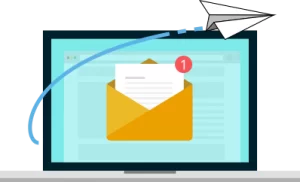In an earlier article, we talked about finding the perfect mix for managing a business with both a physical store and an online shop. Now, let’s explore the switch to running only an eCommerce store.
The Changing Retail Landscape
In the ever-evolving world of retail, adaptation is the key to survival. While traditional brick-and-mortar stores have long been the cornerstone of retail business, the landscape has been shifting dramatically in recent years. The rapid rise of e-commerce and the digital shopping experience have transformed the way consumers browse, shop, and make purchase decisions.
The Importance of Transitioning to E-commerce
As the saying goes, “If you can’t beat them, join them.” For many traditional retailers, this adage has become a mantra as they navigate the changing retail ecosystem. The importance of transitioning from brick-and-mortar to e-commerce has never been more evident. In this article, we will explore the benefits and drawbacks of making this transition, equipping you with the knowledge to make informed decisions for your business’s future.

Retail Trends for 2024
Navigating the 2024 retail landscape unveils pivotal trends where technology, sustainability, and omnichannel strategies dictate the market’s pulse.
Enhanced Customer Experience through Technology
In 2024, the retail landscape will be fundamentally transformed by the integration of advanced technologies aimed at enhancing the customer experience. Artificial intelligence and machine learning are at the forefront, personalizing the shopping journey and predicting consumer behavior with uncanny accuracy.
Virtual and augmented reality tools are revolutionizing the try-before-you-buy concept, particularly in clothing and footwear, where digital fitting rooms reduce the friction of online shopping. The result is a seamless and highly engaging customer experience that bridges the gap between physical and digital retail spaces.
Sustainability and Ethical Practices Take Center Stage
The growing consumer demand for transparency and sustainability has pushed retailers to prioritize environmental, social, and governance (ESG) practices.
Sustainable sourcing and circular economy principles are becoming the norm, with retailers adopting green logistics and packaging solutions. This shift is not only a response to consumer pressure but also a strategic move, as sustainable practices often lead to operational efficiencies and cost savings.
Brands that effectively communicate their ESG efforts are experiencing a noticeable increase in loyalty and customer trust.
The Blurring Lines Between Digital and Physical Retail
The division between online and offline retail spaces has been diminishing over the years, and 2024 promises a further integration of the two domains.
As technology permeates the brick-and-mortar environment, the traditional shopping experience is being redefined. Augmented Reality (AR) fitting rooms, interactive displays, and in-store robots are no longer just concepts of the future—they are today’s reality, enhancing the customer experience and making shopping more interactive and personalized.
On the flip side, eCommerce platforms are realizing the importance of offering tangible experiences to their customers.
Pop-up shops, experiential events, and collaborations with physical stores provide online-first brands with an opportunity to foster direct customer relationships and gather immediate feedback.
As the lines continue to blur, the ultimate goal for retailers in 2024 will be to create a seamless, omnichannel experience that caters to the evolving preferences of the modern shopper.
If you want to read more about the seven other retail trends we predicted, read our article on LinkedIn. While you’re there, consider following us.
Benefits of Moving Your Brick-and-Mortar Store Online
Expanding Your Reach
One of the most compelling reasons to transition to e-commerce is the opportunity to reach a global audience. Unlike traditional brick-and-mortar stores, which are limited by geographical location, e-commerce allows your business to extend its reach far beyond the confines of your physical store. By embracing online retail, you can attract customers from regions and countries you may have never considered before. The sky truly is the limit in the world of e-commerce.

24/7 Shopping Convenience
E-commerce offers the ultimate convenience for both businesses and customers. Unlike brick-and-mortar stores with set operating hours, online shops are accessible 24/7. This means your customers can browse and make purchases at any time, day or night. The flexibility of e-commerce caters to those who prefer to shop outside of regular business hours, making it a win-win for both merchants and consumers.
Cost Savings
Running a brick-and-mortar store comes with significant overhead costs, such as rent, utilities, and maintenance. In contrast, the expenses associated with e-commerce are generally lower. For instance, a domain-specific email address and web hosting are typically more cost-effective than maintaining a physical storefront. Additionally, e-commerce allows you to streamline your storage and inventory management, potentially reducing staffing and operational costs.
Key Considerations for Your Transition
Setting SMART Goals
Before diving headfirst into e-commerce, it’s crucial to set SMART goals. SMART is an acronym for Specific, Measurable, Achievable, Relevant, and Time-bound. These goals provide a data-driven framework for your e-commerce strategy, helping you stay focused and track progress. For example, your SMART goals could include increasing online sales by a specific percentage or growing your email subscriber list within a set timeframe.
Creating Online Buyer Personas
Don’t make the mistake of assuming that your online customers will be identical to your brick-and-mortar ones. Online buyer personas are essential for visualizing your digital customer base. These personas consider factors such as age, gender, location, pain points, buying motivations, and goals. Gathering this information from competitors’ social media pages, online reviews, and email marketing can help you tailor your online approach to a broader audience.
Selecting Your Products Wisely
While it may be tempting to move your entire inventory online, it’s often wiser to start with a carefully selected product range. Begin by offering your top-selling products, lightweight items that are easy to ship, or unique products that encourage social media sharing. Limiting your initial catalog to a manageable number simplifies your online store’s setup and reduces the complexity of managing descriptions and images.
In the next section of this article, we will explore the practical steps involved in transitioning your brick-and-mortar store to e-commerce, from choosing the right e-commerce platform to setting up payment gateways and optimizing your website for mobile shoppers.
Building Your E-commerce Store
Choosing the Right Platform:
When transitioning your brick-and-mortar store to the digital realm, selecting the right e-commerce platform is crucial. There are various options available, but it’s essential to pick one that aligns with your business needs and goals.
Selecting a Domain Name:
Your online store’s domain name is its digital identity. It’s not just a web address; it’s a critical part of your brand. Choose a name that is easy to remember and search-friendly. Ensure that it reflects your business and resonates with your target audience.
Setting Up Payment and Payment Gateways:
Managing payments efficiently is a fundamental aspect of any e-commerce operation. Selecting a reliable payment gateway is vital. While there are costs associated with payment gateways, some platforms like Shopify offer in-house solutions, such as Shopify Payments, which can save you money on transaction fees.
Addressing Shipping Concerns:
Shipping logistics can be a challenging aspect of transitioning to e-commerce. It’s essential to offer shipping options that align with customer expectations. Many customers now expect free shipping, so consider how you’ll manage these costs. Additionally, providing order tracking can boost customer trust and satisfaction.
Creating Essential Web Pages:
Building a well-structured online store involves creating essential web pages that enhance the user experience. These pages include:
- Homepage: Your homepage serves as the digital storefront and should be clear, concise, and visually appealing. It should provide easy navigation to other sections of your store and feature high-quality images.
- Product Pages: These are where the actual transactions happen. Your product pages should provide detailed product information, transparent shipping and return policies, multiple product images, and customer reviews. Ensure that the “buy now” or “add to cart” button is prominently displayed.
- Collection Pages: Think of collection pages as part of your digital catalog. They organize products into different categories or collections, making it easier for customers to browse. Use quality imagery and provide essential product information.
- Shipping and Return Page: This page might not be the most glamorous, but it’s crucial for transparency. Use clear language, include contact information, and offer country-specific shipping details.
- About Us Page: Often overlooked, the “about us” page can be powerful in conveying your brand’s story and mission. Include videos and milestones to engage customers and build trust.
Building these pages might seem daunting, but e-commerce platforms often provide templates and tools to simplify the process. Hiring a professional or using third-party apps can also help if you’re not experienced in web design.
Pre-Launch Preparation
Implementing Website Analytics:
Before attracting your first customer, it’s essential to set up a robust website analytics system. Google Analytics is a popular choice, but other alternatives are available. Website tracking provides critical insights into how customers interact with your site. You’ll gain data on traffic sources, popular landing pages, conversion rates, and more. This data-driven approach will guide your decisions and help you make informed choices to grow your online store effectively.
Setting Up Email Marketing:
Email marketing is a powerful tool for online retailers. Platforms like Sendinblue, Klaviyo, and Mailchimp can help you reach your audience effectively. While email marketing might be new territory for traditional retailers, it offers targeted communication with your subscribers. To build your email list, consider offering incentives like discounts to encourage customers to share their email addresses.
Collecting Customer Email Addresses:
Lead generation is crucial for e-commerce success. Consider strategies like running lead ads on Facebook to target your audience. Offer opening store discounts or exclusive deals to entice potential customers to provide their email addresses. Building a substantial email list can be a significant asset for your online business.
Creating a “Coming Soon” Landing Page:
A “coming soon” page can serve multiple purposes. It can generate excitement among potential customers, provide a glimpse of your brand, and most importantly, collect email addresses. Use this page strategically to create anticipation for your store’s launch. You can also test different messaging tones to identify what resonates with your audience.

Ensuring Mobile-Friendliness:
Mobile commerce, or m-commerce, is on the rise, with significant year-on-year growth. Given this trend, it’s crucial to ensure that your online store is mobile-friendly. Shoppers use various devices to access e-commerce sites, and a mobile-responsive design is essential for providing a seamless user experience. Test your website thoroughly on mobile devices to ensure that you’re catering to the mobile-savvy audience effectively.
These pre-launch preparations set the stage for a successful transition to e-commerce. By implementing website analytics, email marketing, lead generation, and ensuring mobile-friendliness, you’ll be well-prepared for the exciting journey ahead.
Key Takeaways for Transitioning to E-commerce
Transitioning your brick-and-mortar store to an e-commerce platform can be a game-changer for your business. While it comes with its challenges, the benefits can significantly outweigh the drawbacks. Here are some key takeaways to keep in mind as you embark on this journey:
1. Strategic Planning is Crucial: Start by setting clear and achievable goals using the SMART framework (Specific, Measurable, Achievable, Relevant, Time-bound). Gather data about your store’s online performance to inform your decisions.
2. Understand Your Online Audience: Recognize that your online customers may differ from your in-store clientele. Create online buyer personas to understand their age, gender, location, pain points, buying motivations, and goals. Analyze competitor data to gain insights.
3. Choose Products Wisely: Don’t overwhelm your online store with every product you offer offline. Begin with your top-selling, easy-to-ship, and unique products. Keep your online catalog focused and manageable.
4. Select the Right Platform: Choose an e-commerce platform that suits your needs, such as Shopify, Magento, or a custom website. Consider factors like cost, scalability, and available features.
5. Secure Your Domain: Your domain name is your online identity. Opt for a search-friendly and memorable name that aligns with your brand and resonates with your target audience.
6. Payment and Shipping are Critical: Ensure smooth payment processing through a reliable gateway, and consider offering free shipping or clear shipping policies. Trustworthy fulfillment partners can simplify the shipping process.
7. Create Essential Web Pages: Build vital web pages, including a clear and engaging homepage, detailed product pages, well-organized collection pages, transparent shipping and return information, and an impactful “about us” page.
8. Harness Website Analytics: Set up website analytics like Google Analytics to gather valuable data about your online store’s performance. This information will guide your decision-making process and help you grow your store effectively.
9. Leverage Email Marketing: Start building your email list early by offering incentives to potential customers. Implement email marketing strategies to engage with your audience and drive sales.
10. Use a “Coming Soon” Page Strategically: A well-designed “coming soon” page can generate excitement and anticipation for your store’s launch. Use it to collect email addresses and test different messaging tones.
11. Prioritize Mobile-Friendliness: With the rise of mobile commerce, ensure that your website is mobile-friendly. Test its functionality on various devices to provide a seamless user experience.
In conclusion, transitioning your brick-and-mortar store to an e-commerce platform requires careful planning, execution, and adaptation. While there may be challenges along the way, the opportunities for growth and reaching a broader audience make it a worthwhile endeavor. By following these steps and staying adaptable, you can successfully navigate the path from offline to online retail.
If you need help transitioning from retail to eCommerce, give us a call at (800) 743-0410.

